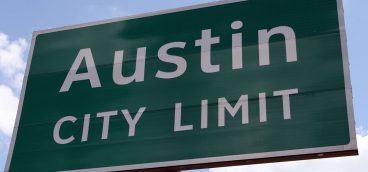Pittsburgh: Too Much Same Ol’ Same Ol’

Despite being one of the country’s hottest cities, at least as far as mainstream media reporting goes, the Pittsburgh metro still provides less opportunity for its residents than its peers. That fact was borne out by recently released employment numbers for July: unemployment is rising above both State and national levels. Worse, the local labor force is shrinking again, not from baby-boomer retirements [as it is everywhere across America] but from discouraged workers dropping out with measurable numbers of them leaving the region.
Comments like these from local economists are chilling, to say the least:
“You’re back to the old Pittsburgh we knew before the drilling, and that’s slow growth,” said Frank Gamrat, an economist at the Allegheny Institute for Public Policy. “It’s a lack of dynamism.”
“It’s not a blip. It’s not something that will come and go away through the natural course of job creation,” says PNC Financial Group economist Kurt Rankin, “unless there’s more appetite for business creation among potential entrepreneurs.”
What’s the problem here when travel publications are calling Pittsburgh the country’s best kept secret and one of the coolest cities in the world, when real estate investors from around the globe are putting money [in the hundreds of millions for some projects] into locations across the metro, and when US Census figures tell us that Millennials are moving back into Pittsburgh in a net positive for the first time since the Korean War? What IS the problem?
Is the problem educational levels, or workforce training, or a combination that results in a mismatch of skills? Allow me to explore some anecdotal evidence.
The geographic breadth of Pittsburgh’s metro area can explain why the MSA [Metropolitan Statistical Area] unemployment rate reflects problems stemming from the region’s economic transition. Looking at unemployment rates for July 2016 as reported by the U.S. Bureau of Labor Statistics, Allegheny County’s rate was 5.9% and Butler County, now encompassing many fast-growing Pittsburgh suburbs, was 5.7%. But the outlying, rural counties exhibit disturbingly higher rates such as Fayette’s at 8.6%, and Armstrong’s at 8.0%. I believe it’s accepted knowledge these days that rural areas have lagged behind their urban counterparts in this economic recovery – weak as it’s been. We have to accept that western PA is not immune to that symptom.
But these statistics are baffling to the casual observer because of the near constant media reports of new global high-tech businesses moving into the region along with a vibrant local start-up scene, especially in software and healthcare. An example of the labor divide is shown with two recent announcements by Caterpillar Inc. They are closing a plant in Washington County that employs 155 and services heavy industries such as mining and oil extraction. But just weeks before that announcement, Caterpillar committed to leasing up to 20,000 square feet for a robotics R&D center in a new Lawrenceville development. It’s ironic but not surprising in our transitioning economy.
Pittsburgh is not alone in this continuing labor force transition. CNBC recently ran a Web site headline piece that reads “Decline in manufacturing a surprise blow to the economy, market shifts on the Fed”. So is the region still overly reliant on manufacturing jobs? Or just the not the right manufacturing jobs for today’s economy?
A quick comparison of Pittsburgh’s employment with the national average shows that for July 2016, the Pittsburgh MSA actually had a lower percentage of Production jobs [the category that includes most manufacturing positions] than the national average by what a BLS report termed a “significant” amount: 4.0% and 4.5% for Pittsburgh and the U.S., respectively. One answer could be that the region still has not added enough advanced manufacturing jobs that produce high value-added products such as those produced in the Silicon Valley and countries such as Germany and Switzerland.
Then there is the question of a “mismatch” of skills among the region’s labor force. ImaginePittsburgh.com, the Web site of the Allegheny Conference on Community Development, lists an astounding 30,570 job openings in the metro area. Let’s for a moment entertain the idea that the actual number of long-term, full-time positions is half that. That would leave 15,000 positions available. Pittsburgh’s labor force is approximately 1.25 million participants. An additional 15,000 full time jobs would be a 1.2% increase in the labor force which, added to 2016’s increase to date of less than 1% would move Pittsburgh into the middle of the ranking with our cohort city group.
I can only conclude that the solution is continued diligence of local and State governments, economic development agencies, and our educational ecosystem – with emphasis on the affordable and curriculum-nimble community colleges – to help train enough skilled workers so that Tri-State natives with an entrepreneurial bent have the resources to bloom and so that companies from outside the region look to Pittsburgh as a source of skilled labor in the coming decade as baby-boomers leave a hole in the rest of the country’s labor force.




